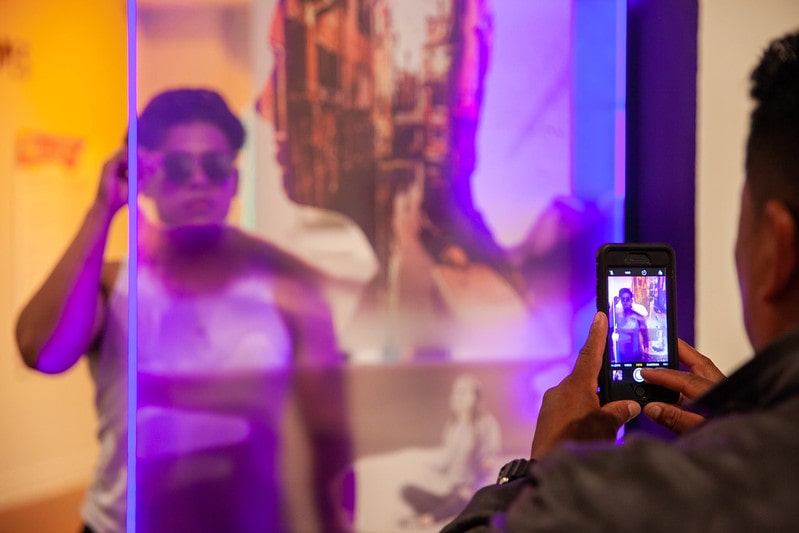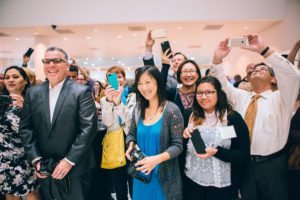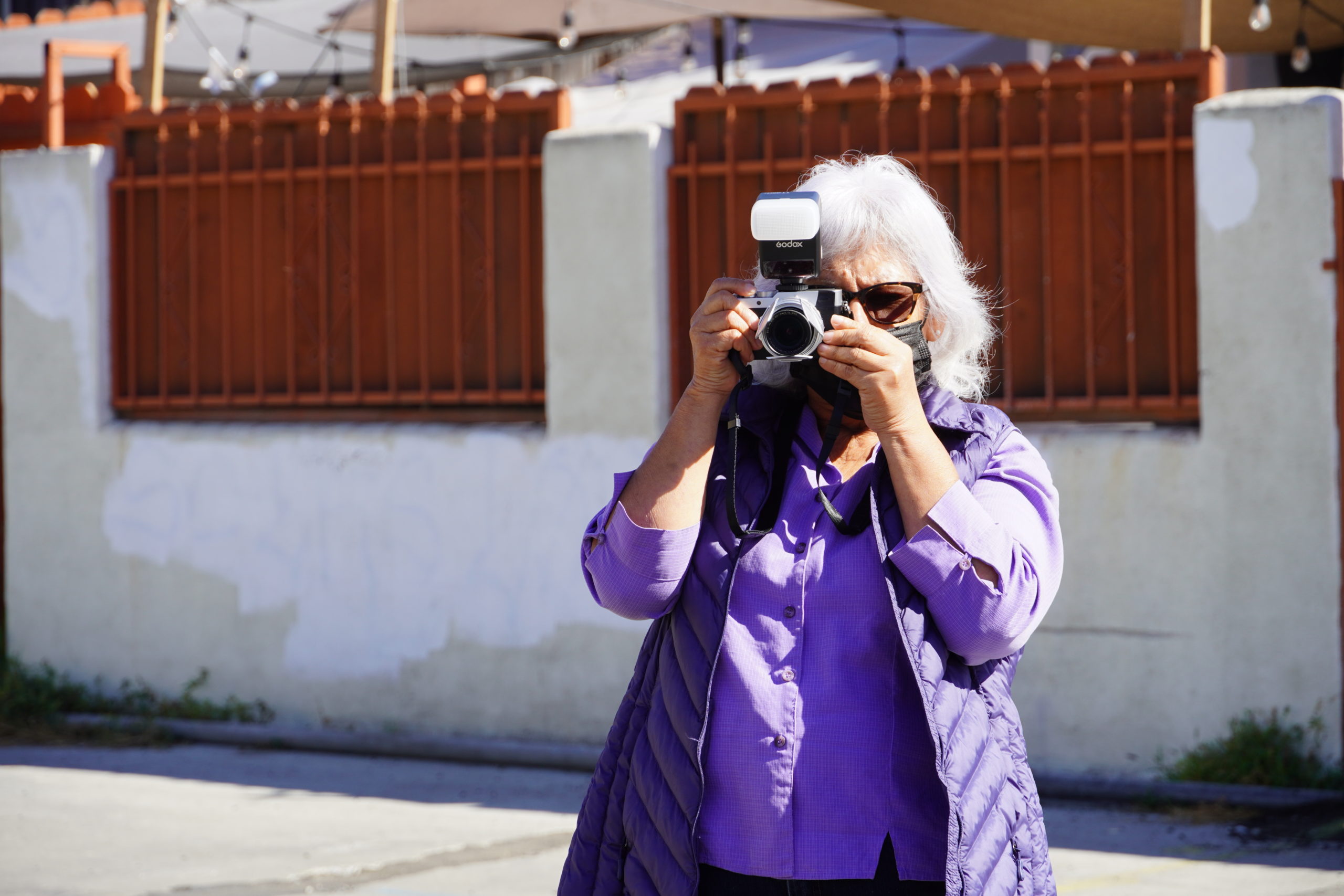Local community helps MOPA innovate through federally funded studies
- Decade-long assessments show growing need for more welcoming museum spaces
- MOPA introduces a new role to support visitor engagement through unique visual thinking strategies
For the past decade, the Museum of Photographic Arts conducted audience assessments to understand how our galleries can be more welcoming to more people. With funding from the National Endowment of the Arts and the Institute of Museum and Library Services, MOPA got first-hand understanding on what communities need from an art museum like ours.
MOPA and many other art museums face the challenge of connecting to people. This disconnect results in museums that aren’t reflective of the voices, diversity and stories of the people they serve, which then leads to lack of involvement from these community members.
There were three programs that aided in establishing a dialogue between the people and MOPA. The programs funded by IMLS were the “Teen Voices Project” and the “Family Engagement Initiative,” while the project supported by NEA was “Audience-driven Innovation.” From these programs and studies MOPA identified two areas where it could support people better: Interpretation and Engagement.
Visitor Engagement Specialist role to aid in museum interpretation

The museum’s perspective does not always have to come from the curator, community participants told MOPA. To help people develop and share their own perspectives about the art featured, MOPA introduced the Visitor Engagement Specialist role. VES provides learning and interpretation support in the galleries at all times. One way they do so is by implementing visual thinking strategies. An example of these is specialists asking three simple questions:
- What’s happening here?
- What do you see that makes you say that? and
- What more do you see?
By being part of the conversation, people develop their own opinions and appreciations on what they’re viewing.
“While the exhibits and activities themselves were very enjoyable, the highlight was talking to [a visitor engagement specialist], who worked at the museum and encouraged us to examine the photos more closely and engage in discussion about finer details of each work. As someone who usually goes through museums fairly quickly and doesn’t give most exhibits more than a cursory glance, it was refreshing to look at the artwork longer and reflect on what the artist was trying to convey. Highly recommend!” said William Zheng via Google Reviews.
To help visitors practice “deep looking,” this year the VES team created an activity called “5 things to make you go ‘hmmm.’” In the activity, visitors use a handout to guide exploration of the artwork in the galleries. For example, one of the handouts encourages visitors to play detective and find a photo that might contain a hidden message. It then asks visitors to explain.
“Gloucester 12 (1944) is an image of a broken wooden furniture that may have a dark history. We do not know how it came to be in such condition. The viewer is left to interpret it freely.” said one “5 things” participant about an image presented in Aaron Siskind: Mid Century Modern. Developing their own ways to engage with art, people can create new approaches to art interpretation.
The studies also show that when the level of text and usage of language in the galleries is too complicated, people can have difficulty interpreting what they’re seeing. Visitors expect text in the gallery walls to be relevant to their understanding and specific level of expertise. Understanding that some of the museum wording can be alienating, MOPA modified its language to better fit that of its communities, ensuring a museum space that is accessible and welcoming to all, regardless of background or “museum experience.”
Engagement at MOPA takes new forms

By using video, context to exhibitions is delivered in a quick, engaging way. This leaves people with more time to enjoy the art itself. For many, video is the preferred method for delivering interpretation. By incorporating more video in the exhibits, learning in the galleries becomes more engaging.
Scale is important to the visitor experience as well. Using large graphical text on the walls and large pieces of interactive tech, such as the Self/Reflection Video Mosaic, MOPA can invite people into the experience itself.
“This is a great museum in Balboa Park. The variety of the exhibits is inspiring, and I learn something about photography from each exhibit.The Video Mirror in the lobby fascinates me – this device reflect[s] your image back, but is made up of pixel[s] that are portraits of individuals.” said Ray Hotchcoock via Google Reviews.
Opportunities to connect with each other in a more tactile way was consistently at the top of people’s list. Located in the Copley Atrium, the MOPA art cart is a great source of hands-on activities for people and their families. Filled with visual learning toys – flipbooks, stereoscopes and more engaging activities – playtime at the art cart can be both fun and a tool to help children verbalize their thoughts to their families.
“We believe in evolving along with our communities,” said Joaquin Ortiz, senior director of strategic initiatives at MOPA. “Through these studies, we solidify our commitment to hearing you and implementing the things that would make MOPA a space where you feel welcomed. Our communities increasingly want to see themselves represented in the museum space and through our actions, we want to show you that we are committed to meeting that need.”
MOPA is dedicated to tackling the challenges it and many museums face to connect with people and wants to continue learning from its visitors. By understanding that the needs of people are an important part of driving the museum toward a more inclusive future, MOPA continues its mission “..to inspire, educate and engage the broadest possible audience through the presentation, collection, and preservation of photography, film and video.”
Written by Janan Salaam, MOPA digital marketing apprentice
Images courtesy of Stacy Keck
Press Inquiries
Press Coordinator

